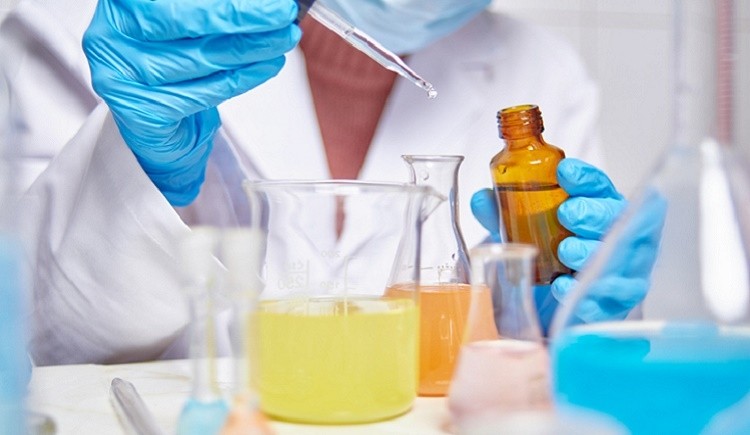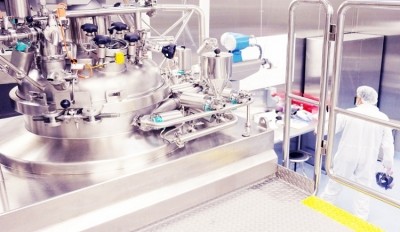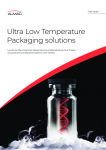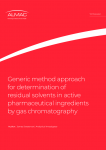CPhI Worldwide
Excipients play key role in pharmaceutical innovation: Croda

While active pharmaceutical ingredients (APIs) tend to draw a great deal of attention in conversations about drug development, excipients also are a vital component of the treatments that patients rely on. What’s more, innovations in excipients can help make new therapies possible.
During the hybrid CPhI Worldwide (taking place in Milan, Italy, November 9-11, with digital content available October 25 to November 19), one on-demand webinar, Novel Excipients, will take a deep dive into the important role these materials play in drug development. The session will be led by three industry speakers:
- Iain Moore, president of EXCiPACT and global head of quality assurance with Croda International
- Vinit Nigudkar, global technical services and application development staff scientist for pharma and health with Innophos
- Martin Jochen Klatt, vice president of sales pharma solutions Europe with BASF and EFCG board member
Outsourcing-Pharma connected with Moore for a sneak peek at the event, and what the current concerns about excipients might be.
OSP: What are some of the most notable trends and developments in the excipients arena?
IM: My article on the future of excipients in the CPhI Annual Report highlighted four themes: regulations, innovation, economics, and sustainability. In many countries, the regulatory developments are one of refinement and focus on things like impurities. Developing nations are still implementing their standards which sometimes includes a definition of GMP for excipients.
For innovation the pathway opened by the novel excipients used in the lipid nanoparticles in the COVID-19 mRNA vaccines has firmly demonstrated that novel excipients with novel properties are required to deliver these large biopharmaceutical active ingredients; the existing palette of excipients is no longer enough to solve formulation problems.
The pandemic has brought immense disruption to supply chains, and the bounce back recently has been almost more disruptive than the original slowdown brought about by national lockdowns. Thus, securing the supply chain is a much higher profile activity now than ever before.
The new topic, which is not yet fully developed, is that of sustainability and the challenges of dealing with the bigger crisis of climate change. The pharma industry will not be exempted from making its contribution to carbon reduction.
OSP: Could you tell us a bit about the role of excipients in supporting pharma innovation and development?
IM: There is a huge opportunity to realize undreamed-of potential in mitigating disease and other health conditions using biopharmaceuticals (“big molecules”), but these require new excipients to facilitate their delivery to the patient. As highlighted in the article there are serious barriers to innovation and the use of novel excipients. Some innovations such as co-processed excipients have had a difficult acceptance from the regulators who consider the simple mixing of excipients to be the first stage of pharmaceutical manufacture and thus require full pharma GMP standards to be applied.
Until all stakeholders can come together consistently to develop a pathway to allow innovative yet safe excipients to be delivered further progress is going to be seriously constrained and this will be a block on realizing pharma innovation and development.
OSP: What are some of the key challenges to the identification of such excipients?
IM: There is plenty of innovation going on I am sure as excipients with new properties are being developed. In many cases, the developers do have some target applications in mind, and this can lead to collaboration between the excipient supplier and the drug product manufacturer.
Once a drug product is approved with these excipients then they will be registered by the authorities, for example in the FDA Inactive Ingredients database. This can then act as a “shop window” of available excipients.
OSP: Please talk about some of the barriers to effective, efficient use of novel excipients, and how those might be cleared.
IM: The regulators are very rightly concerned first and foremost about patient safety, and this applies to novel excipients too. Here then there is the requirement to generate a lot of toxicological data about the novel excipient, which is expensive and a big investment. Then once that hurdle is cleared all the manufacturing and controls information has to be submitted to the authorities so they can complete the necessary assessment.
In the US at least this can be done via the DMF system thus allowing the excipient manufacturer to retain some confidentiality over their intellectual property which has been invested in the novel excipient. Europe is deficient in this case as the only way to submit such information is via the marketing authorization which requires full disclosure of all information to the drug product maker.
OSP: Please tell us about issues surrounding excipient quality—what are some of the key questions to ask, things to look out for, etc.?
IM: For existing excipients then the key themes are unaltered, better knowledge about their composition and hence purity. From which we have more details about the impurities that may be of concern. Some of these are now well defined based on the chemistry and physical processing used to make the excipient, and thus what needs to happen is the excipient supplier can provide those details to the excipient user.
Too often we are reacting to new knowledge about impurities (nitrosamines is a good example) and whereas that does lead us to improved patient safety, we do need to become more proactive on this topic. More easily said than done of course as that requires us to know where to look!
The other key component to assurance of excipient quality is the application of the core GMP principles to their manufacture. The EU guidelines on the formalized risk assessment for ascertaining the GMP required for excipients was a landmark in the industry in that it did not proscribe a set of rules but required industry to determine those rules on a case-by-case basis. This has given flexibility to industry and also alignment with common practices but in a highly structured manner, allowing objective auditing and inspections.
With this regulatory foundation in place then excipient GMP certification Schemes like EXCiPACT are playing an increasingly important role in assuring the quality and purity of excipients.
OSP: How are regulations around excipient quality changing, and how might they alter in the future?
IM: In the developed world the regulations are quite mature and for the most part are controlling the risks to patient safety. Thus, I don’t foresee much development there, other than when sustainability gets onto the political agenda, and of course as a result of knowledge about new impurities.
In the developing world, we have seen emerging regulations being developed that can set quite proscriptive standards for excipients, bringing them more fully aligned with API standards. But global regulatory structures like PIC/S and ICH will allow for harmonization to develop as countries seek alignment.
OSP: Please tell us about some of the products and solutions Croda offers to pharma industry customers in wrangling with their excipients concerns.
IM: Croda was established in 1925 making the natural product Lanolin, which still has applications in medicinal creams and lotions today. That product, like many of our other specialty ingredients, has undergone many improvements so we can proudly offer an extensive range of high purity excipients for use in drug substance manufacturing and formulation development. These go beyond standard pharmacopeia requirements to provide optimum performance alongside product quality consistency and reliability.
More recently we can offer vaccine adjuvants and even some active substances to the same and higher quality standards. And, if a customer needs a true specialty that is not in our current portfolio, then we will gladly work with pharma industry customers to try and create a custom solution. Our purpose, “Smart Science to Improve Lives,” is the driving force behind all that we do, and in the case of excipients, the lives we seek to improve are those of the patients.
CPhI Worldwide 2021 is a hybrid event; the in-person component (expected to host up to 30,000 industry professionals with 1,400 exhibitors) takes place November 9-11 in Milan, and the digital content will be available until November 19. Read here to register or to see a list of sessions, events, and other features.



















